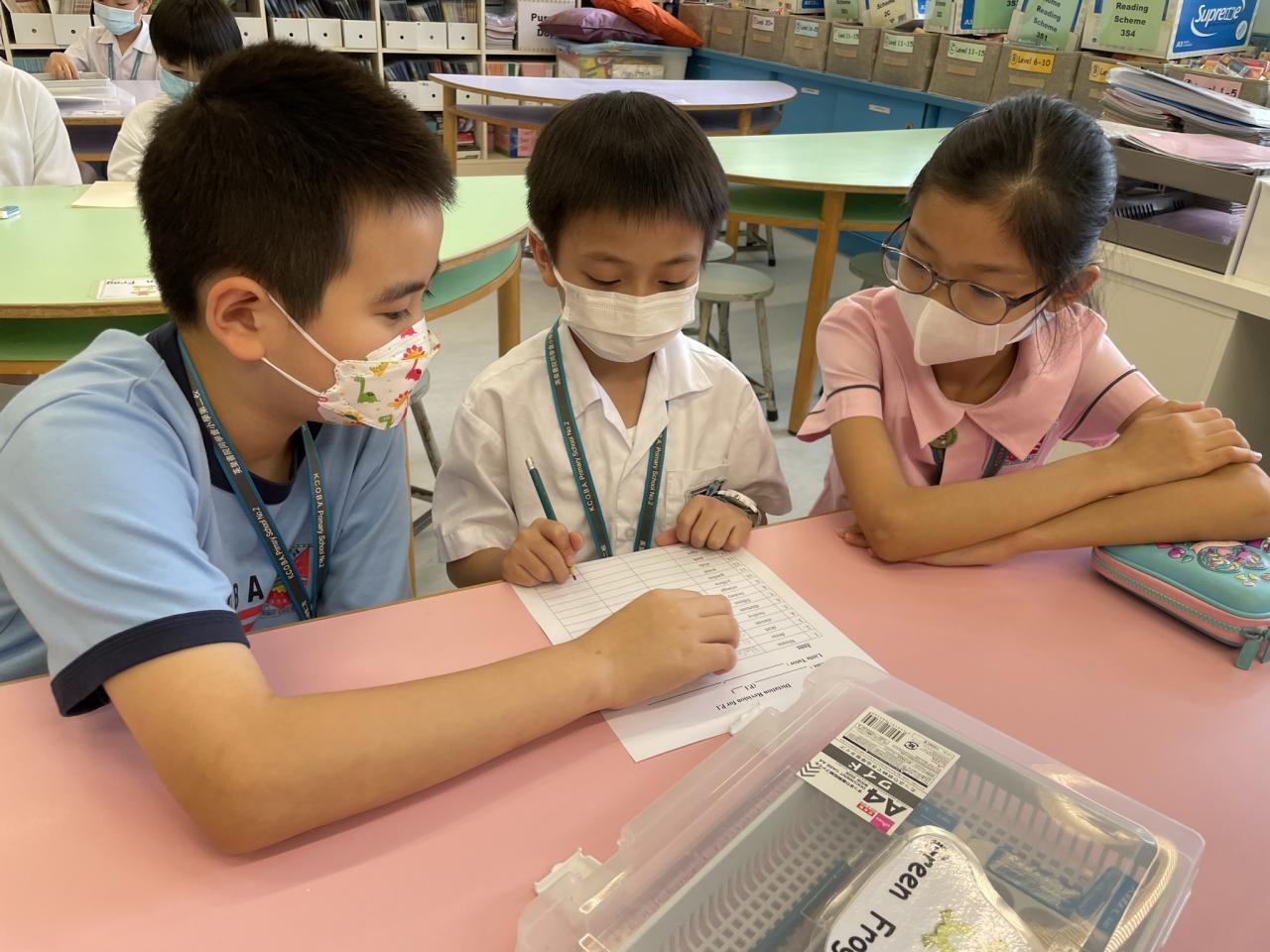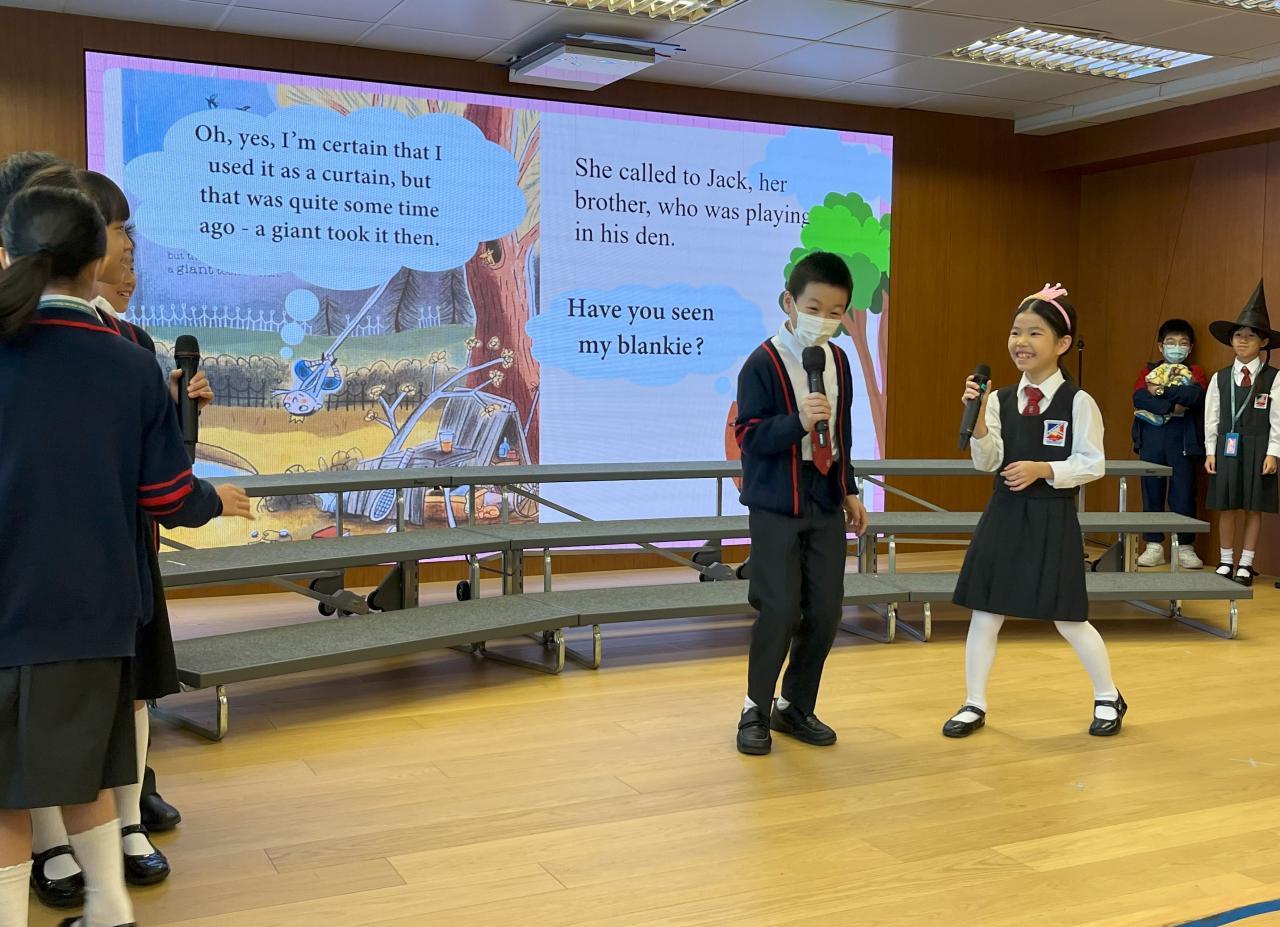| Curriculum |
Content |
| Strengthen the education of values and promote the whole-person development of students |
- The Cross-curricular Approach will be launched from P.1 to P.6 to enhance the education on the theme: "ICARE".
- Different sub-theme of each grade:
- P. 1, 4: Care
- P. 2, 5: Esteem
- P. 3: Responsibility
- P. 6: Appreciate
|
| Deepen self-directed learning and promote gifted education |
To enhance students’ self-directed learning skills
- School based self-directed learning skills are designated in different grades. Teaching activities related to the designated self-directed learning skills are designed for the lessons.
- Students are encouraged to use notebook to help with their learning inside and outside the classroom.
- Discussion language will be introduced to help students to process and organize information in group learning activities. When doing group discussion, students are encouraged to:
- involve the five important elements of group discussion
- use targeted discussion language throughout the discussion
- use conjunctions and linking words to help them link up their ideas more smoothly during the discussion process.
- Idioms and proverbs are introduced to students to improve their language use in writing.
Gifted Education
- The following elements are included in teaching activities
- gifted education (e.g. High-order thinking questioning
techniques, challenging tasks…etc.)
- gifted education (e.g. High-order thinking questioning
techniques, challenging tasks…etc.)
- brain-based teaching skills,
- drama education elements
- Challenge zones are included in assignments.
- Workshops and lesson observation activities related to ‘Brain Based Learning’ strategies will be carried out to enhance teachers ‘teaching skills on ‘Creativity’ and ‘Critical Thinking’. Learning activities related to the followings should be designed:
- Information convergence
- independent thinking,
- knowing right from wrong and
- expression of opinions
- At least one of the school’s English activities will contain ‘Creativity’ / ‘Creativity and critical thinking’ elements. E.g. English Day and Fantasy Land
To cater for learners’ diversity
- Besides to enrich the language environment, current assignments are improved to have different learning activities involving different thinking levels. E.g. To have graded tasks / design extra challenging parts for more able students.
- More-able students are chosen and trained to be English Ambassadors. They will be assigned to help with the school’s
English activities.
E-Learning
- Some new apps, software and strategies are tried out and introduced to diversify students' e-Learning experiences. E.g. Google Classroom. In P. 1-6 classes, a learning activity with the use of Google Classroom will be carried out once per term.
- Teachers should also try to create chances for the students to learn with e-Learning elements in their preparation (before the lesson) and extension (after the lesson) process. E.g. Google Classroom is well used to help students prepare / consolidate before / after the lessons. Teaching and learning activities with other e-Learning elements are also carried out, modified, evaluated and improved.
- Space Town Pilot Scheme (P. 1- P. 3) will have the e-Learning part of the curriculum reinforced, while the application of apps and software in the teaching of phonics and writing in P.1- P.3 Spacetown lessons will be continued.
- Online homework, e.g. Oral reading reports are submitted and marked on Google Classroom.
To promote reading
- P.4-6 students are required to do ‘Home Reading Record’ e.g. once a week. It includes speaking and written tasks. Little gifts are given to students achieving different number of tasks.
- Students are encouraged to read more non-fiction books.
- Some students will be invited in each class to introduce their favorite book(s) to their classmates. Photos of the students holding their favourite book(s) will also be posted in the classroom.
- Teachers share read some readers from the school library as motivation in the first five minutes of the lessons regularly. The author or the series will also be introduced so that students know what books they can borrow from the library.
- There is also a reading scheme to encourage the students to read more. Within a designated period, those classmates who have read 40 or more books will get a gold prize; those who have read 30 or more books will get a silver prize and those who have read 20 or more books will get a bronze prize.
- Reading strategies for each grade are mapped out.
- To build up students' interests and habit in reading, P.4-6 readers are replaced with chapter books. Reading guidance will be given by teachers in the lessons, and Nearpod classroom activities are also carried out in lessons to check if students have read at home.
- Spacetown Home Reading Scheme requires students to read level books and small books which topics match with the lesson content
- Strategies to promote online reading:
- Scholastic Bookflix online reading platform is used in the school’s online reading program, P.5- P.6 book report writing and book sharing in lessons.
- Six e-books which match the textbook modules are assigned to read in each level. These books are also marked on the Scholastic Bookflix booklist to let students read at home during the learning of each module.
- Use of E-Library
- Library support
- Every Tuesday and Thursday morning ‘Fun Book Book'
- Books related to STEM are introduced in English books display activity
- A ‘Star Reading Scheme’ is also launched to encourage students to borrow more English books from the library.
|
| 3. Promote positive education to live a rich life |
- The teaching content is suggested to be authentic, interesting and
relative to daily life
- Elements of positive moral value(s) will also be included in lesson
planning.
|
| Bridging Programme for P.1 |
- A bridging programme will be carried out in P.1 English lessons in the first month of the first term. Lesson plans and worksheets are designed focusing on alphabets, vocabs revision and recognition, classroom routines and instructions.
- Grouping and leveling will be done on students to find out and cater for learner diversity.
|
| Bridging Programme for P.6 |
- A bridging programme will be carried out in P.5, 6 English lessons (To be started in P.5 2nd term)
- In order to build up their knowledge and confidence in using English in a new secondary school environment, a worksheet is made to build up their vocabulary knowledge related to the theme "Secondary school life".
- The school also has activities providing a lot of opportunities for students to communicate with others in English to get ready for their secondary school life. For example, English Ambassadors, Little tutors, English Speaking Days, English Day (Drama Competition), Games Day, Summer Day Camp and some after school English activity classes...etc.
|
|






















